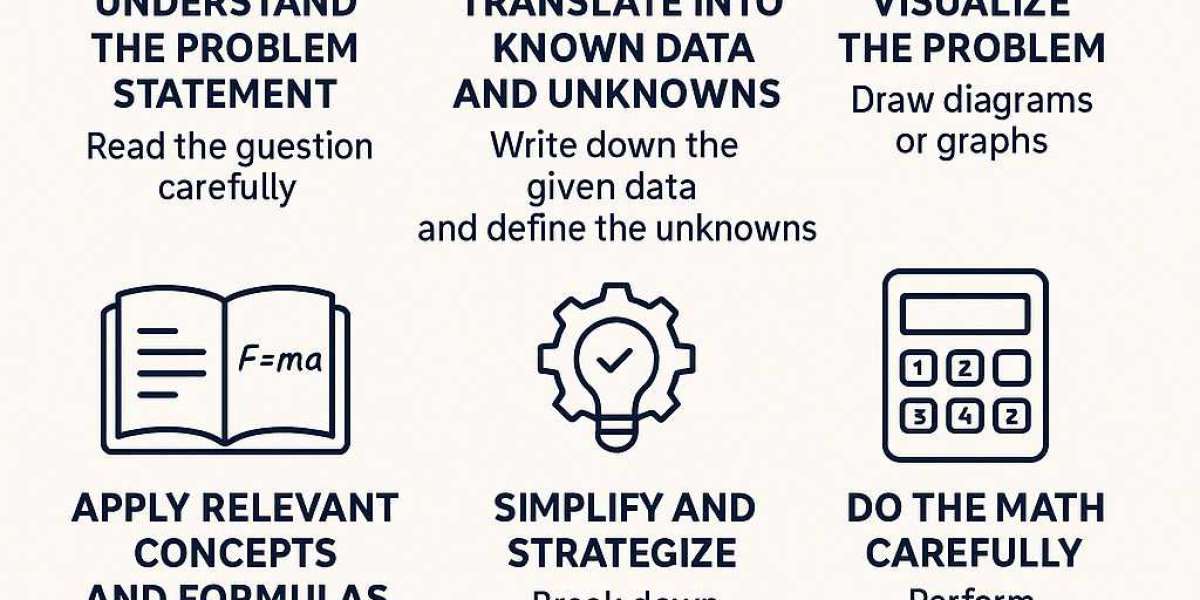The JEE Advanced exam is known for testing not just knowledge but your analytical thinking and problem-solving skills. Here's a strategic approach to breaking down tough problems into manageable, logical steps. This approach aligns well with the JEE Advanced exam pattern and can greatly enhance your performance.
Understanding the problem statement
Read the question carefully
Often, students rush through the question and miss key information. Read every word of the problem to understand what's given and what's being asked.
Identify the topic and concept involved
Classify the problem under a particular topic such as mechanics, thermodynamics, organic chemistry, or algebra. Then, narrow it down to the specific concept involved like Newton's laws, Gibbs free energy, SN1 mechanism, or complex numbers. A deep understanding of the JEE Advanced syllabus is essential to make this classification efficiently.
Translate into known data and unknowns
Write down the given data
List all the known values and parameters. For example, if it’s a physics problem, note the units, forces, distances, etc.
Define the unknowns
Clearly identify what you need to find. Assign variables if necessary.
Visualize the problem
Draw diagrams or graphs
This is especially important in physics and mathematics. A clear diagram can help simplify the problem and reveal hidden relations.
Use standard representations
Use symbols and standard notations for vectors, functions, or chemical structures.
Apply relevant concepts and formulas
Recall applicable theories
Bring to mind relevant laws, principles, or formulae. For instance, if it’s an optics problem, think about Snell’s law or lens formulas.
Avoid rote application
Don’t just plug values into a formula. Understand how and why the formula is applicable in the context of the problem. These are essential JEE Advanced exam preparation tips that can save you from common traps.
Simplify and strategize
Break down multi-step problems
Split the problem into smaller, sequential steps. Solve each part and feed the results into the next.
Choose the right method
Decide whether to go with elimination, substitution, graph plotting, or dimensional analysis based on what seems most effective.
Do the math carefully
Perform calculations step-by-step
Avoid mental math when accuracy is critical. Write each step to minimize careless errors.
Check units and dimensions
Always verify that your units are consistent and the dimensional analysis matches the expected result.
Verify the final answer
Backtrack and validate
Recheck each step and see if your answer fits logically and numerically. Also, verify if the answer makes sense in the real-world context.
Use approximation techniques
Check if the answer is in the correct range by estimating or using boundary conditions.
Practice makes perfect
Work on diverse problems
Expose yourself to a wide variety of problems from previous years and JEE Advanced mock tests.
Analyze your errors
Understand where you went wrong and avoid repeating the same mistake. Incorporating feedback from mock tests is one of the most effective JEE Advanced exam preparation tips.
Conclusion
Breaking down a JEE Advanced problem into logical steps is not just about finding the answer. It’s about developing a structured thought process, improving accuracy, and building confidence. With regular practice, a thorough understanding of the JEE Advanced syllabus, and a systematic approach based on the JEE Advanced exam pattern, you can tackle even the toughest problems with clarity and efficiency.



